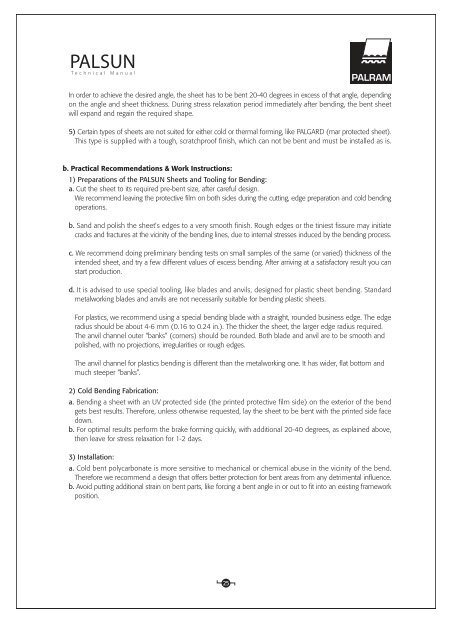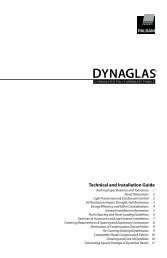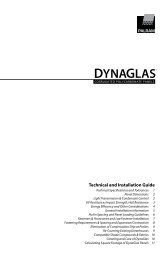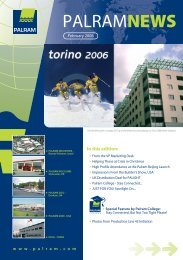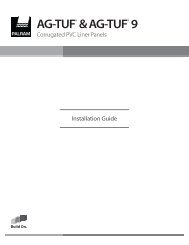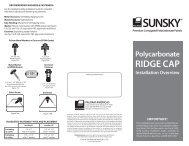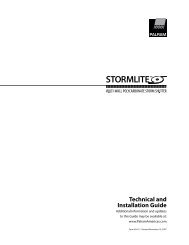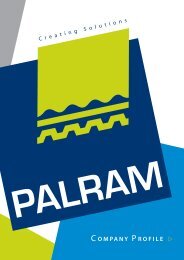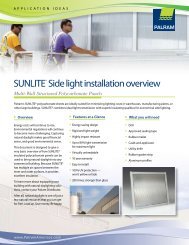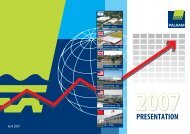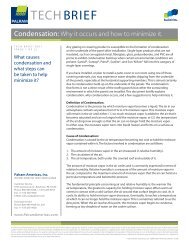PALSUN Technical Guide
PALSUN Technical Guide
PALSUN Technical Guide
You also want an ePaper? Increase the reach of your titles
YUMPU automatically turns print PDFs into web optimized ePapers that Google loves.
<strong>PALSUN</strong><strong>Technical</strong> ManualIn order to achieve the desired angle, the sheet has to be bent 20-40 degrees in excess of that angle, dependingon the angle and sheet thickness. During stress relaxation period immediately after bending, the bent sheetwill expand and regain the required shape.5) Certain types of sheets are not suited for either cold or thermal forming, like PALGARD (mar protected sheet).This type is supplied with a tough, scratchproof finish, which can not be bent and must be installed as is.b. Practical Recommendations & Work Instructions:1) Preparations of the <strong>PALSUN</strong> Sheets and Tooling for Bending:a. Cut the sheet to its required pre-bent size, after careful design.We recommend leaving the protective film on both sides during the cutting, edge preparation and cold bendingoperations.b. Sand and polish the sheet’s edges to a very smooth finish. Rough edges or the tiniest fissure may initiatecracks and fractures at the vicinity of the bending lines, due to internal stresses induced by the bending process.c. We recommend doing preliminary bending tests on small samples of the same (or varied) thickness of theintended sheet, and try a few different values of excess bending. After arriving at a satisfactory result you canstart production.d. It is advised to use special tooling, like blades and anvils, designed for plastic sheet bending. Standardmetalworking blades and anvils are not necessarily suitable for bending plastic sheets.For plastics, we recommend using a special bending blade with a straight, rounded business edge. The edgeradius should be about 4-6 mm (0.16 to 0.24 in.). The thicker the sheet, the larger edge radius required.The anvil channel outer “banks” (corners) should be rounded. Both blade and anvil are to be smooth andpolished, with no projections, irregularities or rough edges.The anvil channel for plastics bending is different than the metalworking one. It has wider, flat bottom andmuch steeper “banks”.2) Cold Bending Fabrication:a. Bending a sheet with an UV protected side (the printed protective film side) on the exterior of the bendgets best results. Therefore, unless otherwise requested, lay the sheet to be bent with the printed side facedown.b. For optimal results perform the brake forming quickly, with additional 20-40 degrees, as explained above,then leave for stress relaxation for 1-2 days.3) Installation:a. Cold bent polycarbonate is more sensitive to mechanical or chemical abuse in the vicinity of the bend.Therefore we recommend a design that offers better protection for bent areas from any detrimental influence.b. Avoid putting additional strain on bent parts, like forcing a bent angle in or out to fit into an existing frameworkposition.25


